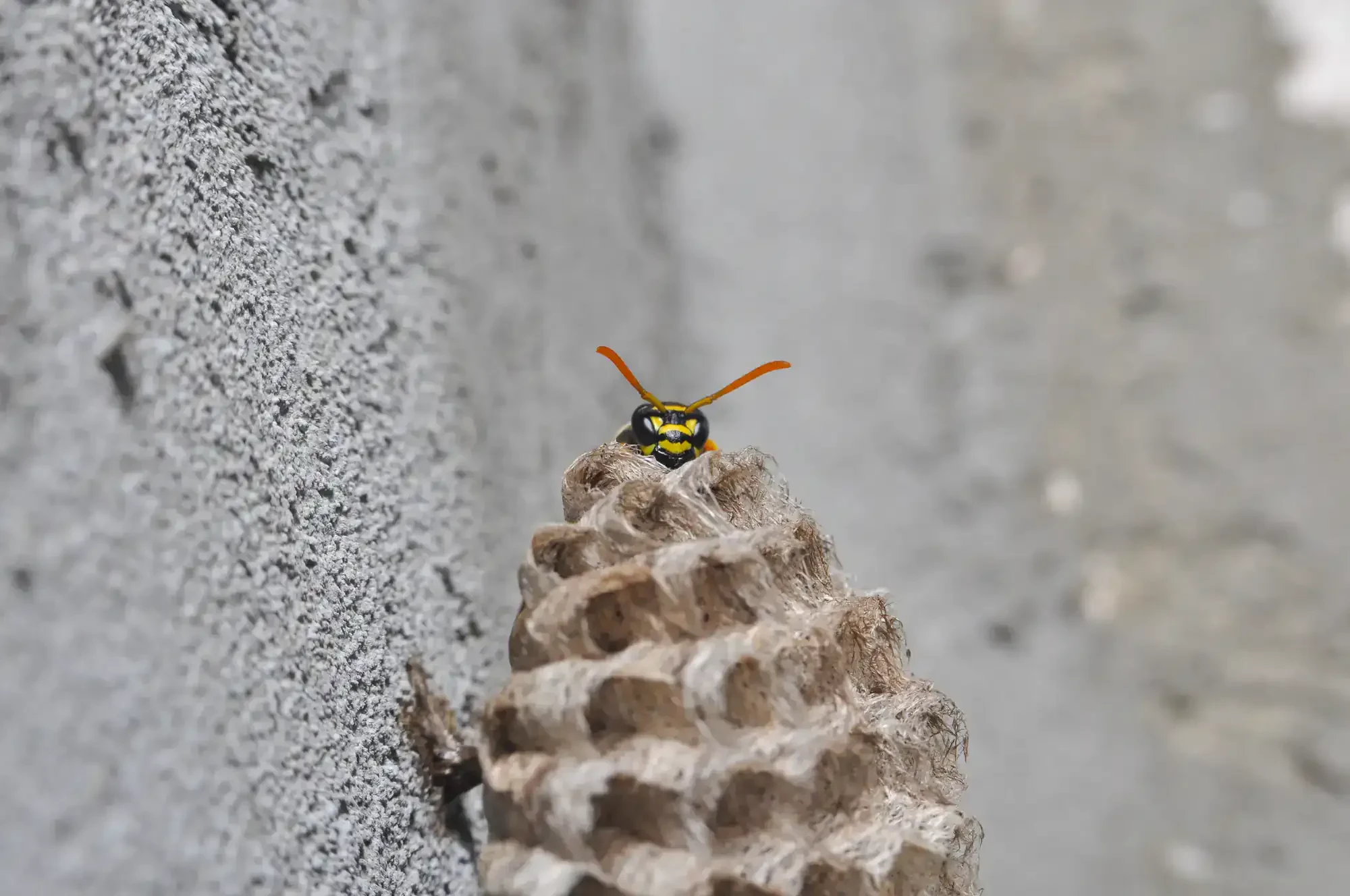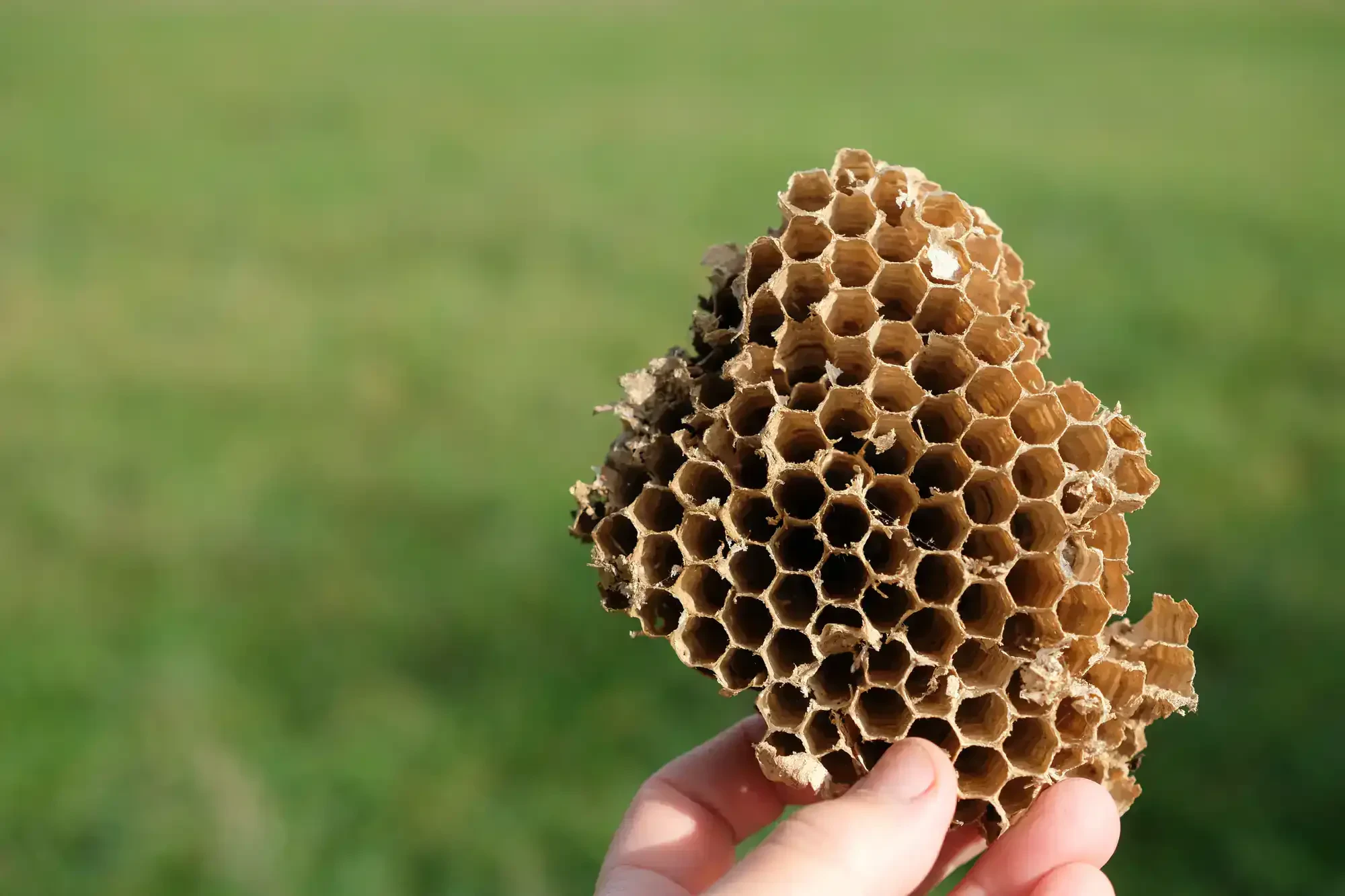
Hear from Our Customers

You’ll walk outside without scanning the air for threats. Your kids can play in the yard without you holding your breath every time they run near the house. That constant worry about someone getting swarmed disappears completely.
Most people don’t realize how quickly hornets can turn a peaceful backyard into a danger zone. One nest can house hundreds of aggressive insects, and they don’t give warnings before attacking. When we eliminate the problem properly, you get your outdoor space back.
The difference isn’t just removing the current threat. It’s knowing the job was done right by someone who understands exactly how these insects behave in St. Charles’s climate and terrain.
We’ve been protecting St. Charles families since 2005. Roger brings 26 years of hands-on experience to every job, and we’re one of under 100 companies in the U.S. offering canine bed bug detection services.
We’re the pest control company that keeps the same technician on your property year after year. No explaining your situation to different people every visit. No wondering if the new guy understands what worked last time.
St. Charles residents know us because we live here too. We’ve handled hornet problems in every neighborhood, from the older homes near downtown to the newer developments. When your neighbors recommend someone for pest control, they’re usually talking about us.

First, we locate every nest on your property. Hornets often build in multiple locations, and missing even one means the problem isn’t solved. We check eaves, attics, trees, and any other spots where they typically establish colonies in St. Charles.
Next comes the treatment phase. We use professional-grade equipment and targeted applications that eliminate the entire colony, including larvae and pupae that store-bought sprays can’t reach. This work happens when hornets are less active, reducing the risk of aggressive swarming.
After elimination, we remove the physical nest structure and apply preventive treatments to discourage future infestations. We also identify and seal potential entry points that might attract new colonies. You’ll get a detailed explanation of what we found and what we did to solve it.

Ready to get started?
Complete nest elimination covers the entire colony structure, not just the visible portions. We treat wall voids, attic spaces, and other hidden areas where hornets might be building secondary nests. The service includes follow-up monitoring to ensure the problem is completely resolved.
St. Charles properties often deal with multiple stinging insect species simultaneously. European hornets and bald-faced hornets are common here, along with yellow jackets that people frequently mistake for hornets. Our treatment approach accounts for the specific behaviors and nesting patterns of whatever species we find on your property.
The service comes with our guarantee. If hornet activity returns to treated areas within the warranty period, we return at no additional charge. We also provide recommendations for reducing future attractants around your property, like managing fallen fruit or addressing moisture issues that draw these insects.

Hornet stings are significantly more dangerous than most other stinging insects. Unlike bees, hornets don’t lose their stinger after one use, which means they can sting multiple times in a single attack. Their venom is also more potent and delivered in larger quantities.
The real danger comes from their aggressive swarming behavior. When a hornet nest feels threatened, hundreds of insects can attack simultaneously. This creates a medical emergency situation, especially for anyone with allergies to insect venom. Even people without known allergies can have severe reactions to multiple stings.
In St. Charles, we see the most serious incidents during late summer when hornet colonies reach peak size and become more territorial. This is why professional removal is so important – the risk of triggering a mass attack during DIY attempts is simply too high.
Consumer-grade sprays are designed for surface contact, but hornet nests have complex internal structures that these products can’t penetrate. The spray might kill hornets you can see, but it doesn’t reach the larvae, pupae, and adult hornets deeper inside the colony. Within days or weeks, the surviving insects rebuild and the problem returns.
Hornet nests in St. Charles are often built in protected locations like wall voids, attic spaces, or dense tree branches. Retail sprays don’t have the pressure or specialized delivery systems needed to treat these challenging locations effectively. You end up with partial elimination that actually makes the remaining hornets more aggressive.
Professional treatments use targeted application methods and commercial-grade products that eliminate the entire colony structure. We also have the protective equipment and training to safely access nests in difficult locations without triggering defensive attacks that put you at risk.
The safest and most effective time for hornet nest removal is early morning or late evening when the insects are less active and most of the colony is inside the nest. However, timing also depends on the season and the specific location of the nest on your St. Charles property.
Early in the season, when nests are smaller, removal is generally easier and less risky. But waiting isn’t always an option if the nest poses an immediate threat to family members or pets. Late summer removal requires more specialized techniques because colonies are at peak size and hornets are more aggressive.
Weather conditions also matter. Cool, overcast days reduce hornet activity, while hot, sunny conditions make them more active and defensive. We factor in all these variables to choose the optimal removal strategy for your specific situation, rather than attempting removal at whatever time happens to be convenient.
Hornets are larger than most wasps and yellow jackets, typically measuring 1-2 inches in length with robust bodies and distinctive coloring patterns. European hornets, common in St. Charles, have yellow and brown markings, while bald-faced hornets are black with white markings. Their flight pattern is also different – more direct and purposeful than the erratic movement of yellow jackets.
The nest structure provides the clearest identification. Hornet nests look like large, gray paper footballs hanging from trees, eaves, or tucked into protected spaces. They’re made from chewed wood pulp mixed with saliva, creating a papery appearance. Yellow jacket nests are usually smaller and often built in ground cavities or wall voids.
Behavior is another key indicator. Hornets are generally less interested in your food and drinks compared to yellow jackets, but they’re more aggressive when defending their nests. If you’re seeing large stinging insects repeatedly in the same area, especially near elevated locations around your property, you’re likely dealing with hornets that need professional removal.
Nests inside walls or attics require specialized removal techniques because the insects have multiple entry and exit points, and disturbing them incorrectly can force hornets into your living spaces. These situations are particularly dangerous because the hornets feel trapped and become extremely aggressive when they can’t escape normally.
Professional removal for interior nests involves sealing off access to your living areas first, then treating the nest through exterior entry points or strategic access points. We never seal the main entrance until we’re certain all hornets are eliminated, because trapped insects will chew through drywall or find other ways into your home.
After elimination, we remove the nest material to prevent odors and secondary pest problems. Interior nests often require minor repairs to seal entry points permanently. The process takes longer than exterior nest removal, but it’s the only safe way to handle these complex situations without creating bigger problems for your St. Charles home.
Prevention starts with eliminating attractants and nesting sites around your St. Charles property. Remove fallen fruit from trees, keep garbage cans tightly sealed, and address moisture problems that create ideal conditions for nest building. Hornets also prefer quiet, protected areas, so regular maintenance of eaves, attics, and outbuildings reduces available nesting sites.
Structural prevention involves sealing gaps and cracks where hornets might start building. Pay attention to areas around roof lines, vents, and anywhere building materials create small cavities. Even gaps as small as a quarter-inch can provide access for nest-building queens in early spring.
Professional preventive treatments create barriers that discourage nest establishment without harming beneficial insects. These treatments are most effective when applied before nesting season begins, typically in early spring. However, prevention isn’t foolproof – hornets can travel significant distances and may still choose your property despite preventive measures. Regular inspections help catch new nests while they’re still small and easier to remove safely.